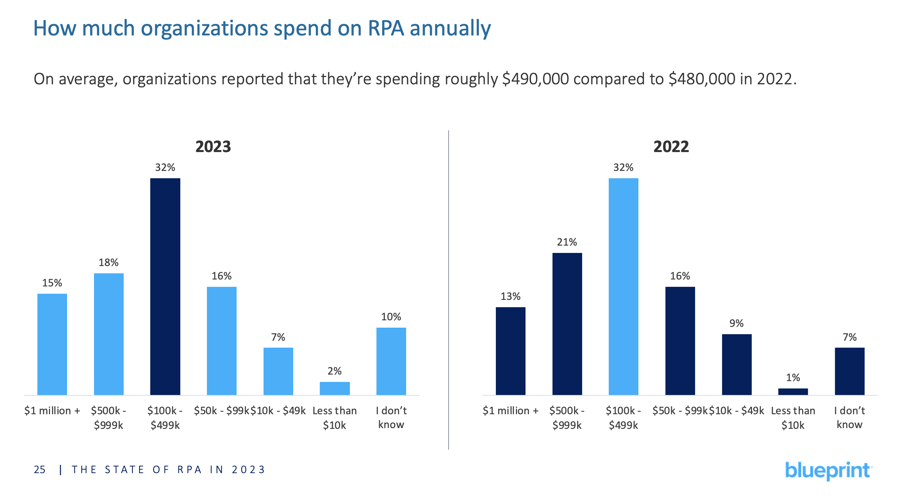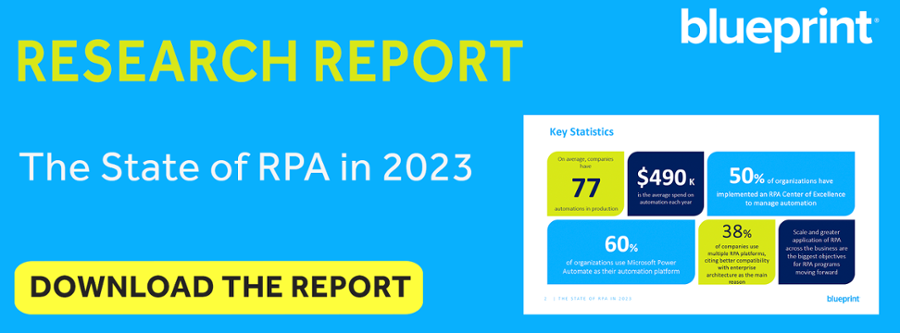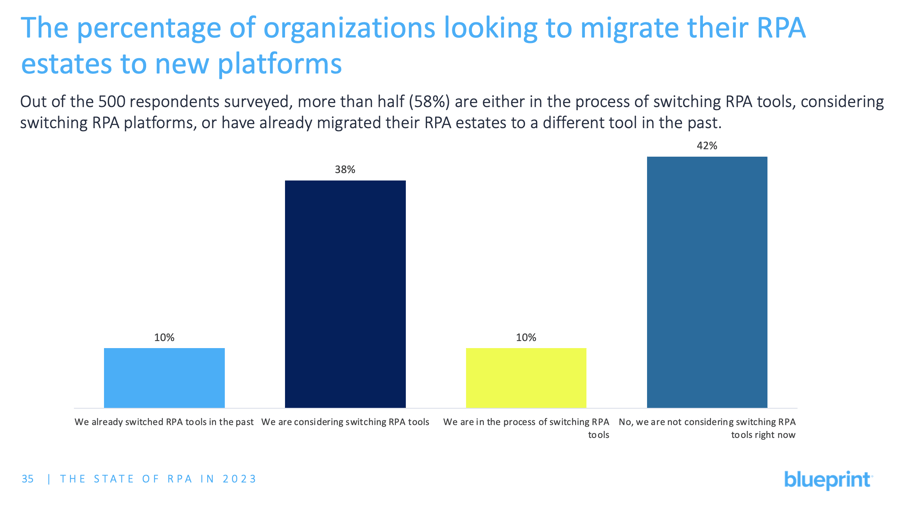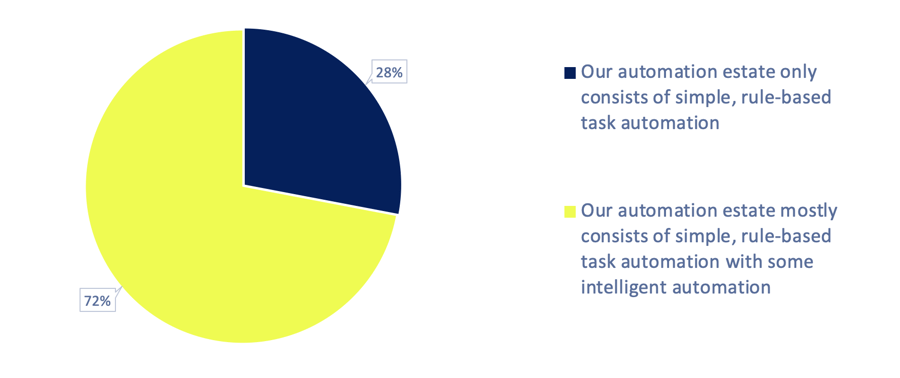Automation Year in Review 2023
With every year that passes, automation’s evolution takes on a life of its own. We do our best to predict what the year might bring, however, automation always has the innate ability to surprise the best of us.
2023 was no different. From where we sit, here is a rundown of the biggest trends that defined automation in 2023.
#1 – Automation’s Total Cost of Ownership is Increasing
According to Blueprint’s research, investment in RPA (robotic process automation) marginally increased in 2023 compared to 2022.
While the rise in annual spend year-over-year was nominal at best, considering how RPA estates got leaner in 2023, there’s more to this story. Blueprint’s research also indicated that the average RPA estate got smaller, suggesting automation practices worldwide are actively removing waste by eliminating inefficient and redundant automated processes. Companies are also turning to other lo-code/no-code automation methods instead of relying solely on RPA. Yet automation expenses still grew.
What possibly accounts for the growth in automation spend annually in the face of RPA estates becoming more efficient and leaner is the rise in licensing fees by legacy RPA vendors. For various reasons, legacy automation providers increased their prices in 2023. Naturally, this would in turn impact the total cost of ownership for automation, making it much more expensive.
The rise in prices and licensing fees by legacy players is arguably the biggest motivator driving so many RPA migrations that also defined automation in 2023.
#2 – RPA Migrations Increased Yet Again
According to Blueprint’s research, the desire to migrate RPA estates from legacy RPA tools to next-generation intelligent automation platforms only got stronger in the past year.
Out of the 500 respondents Blueprint surveyed in 2023, more than half (58%) were either in the process of switching RPA tools, considering switching RPA platforms, or have already migrated their RPA estates to a different tool in the past.
Reducing automation’s total cost of ownership is the main reason driving RPA migrations, which is also why so many organizations are choosing Microsoft Power Automate as their new intelligent automation platform, which we will explore in the next section.
#3 – Microsoft Power Automate Continues Its Ascent to the Top
Microsoft Power Automate has been experiencing an accelerated rise to the top of the RPA vendor market for several years now. The exciting changes Microsoft introduced to Power Automate in 2023 have only served to accelerate Microsoft’s ascent as a leader in this enterprise software category.
RPA practices everywhere are looking to reduce their automation total cost of ownership. Microsoft already boasted the most cost-effective pricing, which became even more attractive when they unveiled Microsoft Power Automate Premier Licenses, further simplifying making business cases to migrate to Power Automate.
In terms of product readiness, Microsoft also introduced AI-assisted Power Automate Process Mining to further aid defining and identifying automation candidates for scale. Microsoft Copilot was also baked into the Power Platform to empower lo-code development and boost scale.
Power Automate is also drawing so much attention because organizations are shifting their digital strategies to enable more lo-code/no-code development. Microsoft enables companies to take automation beyond RPA using the Power Platform with citizen development. Applications can be built with Power Apps, sophisticated chatbots with Power Virtual Agent, and even webpages with Power Pages, opening the door to accelerated delivery without an over-reliance on IT departments.
#4 – RPA Practices Prioritized Quality Over Quantity
In 2023, the average RPA estate got significantly smaller. At first glance, the natural conclusion is that organizations are divesting in automation, but that can’t be further from the truth.
RPA practices have shifted their focus from automating everything and anything possible to automating the right processes and retiring inefficient, redundant automations. Instead of forcing scale blindly, RPA programs have analyzed and assessed their RPA estates.
Business processes and tasks that deliver promising returns in the form of improved quality, speed, and accuracy have been prioritized, and automations that were delivering underwhelming returns have been scrapped.
For example, one Blueprint client that migrated their RPA estate with us to Microsoft Power Automate and completed an RPA Estate Scan decommissioned 31 out of their 100-bot estate to reduce their automation overhead dramatically. Other RPA practices, it seems, have followed suit.
#5 – Reducing RPA’s Total Cost of Ownership and Increasing Scale Were the Biggest Objectives for Automation Teams
There is a clear theme that helps to summarize automation in 2023: organizations wanted to reduce the inflated cost of ownership for RPA while promoting scale.
Reducing costs and enabling scale with simplified, lo-code development are the primary reasons 2023 experienced a steady increase in RPA migrations to Microsoft Power Automate—a trend that we expect to only continue and intensify in 2024.
#6 – AI Gained Even More Attention and Became Top of Mind in Automation
One of the defining themes of 2023 was the rise of artificial intelligence and, more specifically, the meteoric rise of generative AI like ChatGPT. AI, however, is nothing new in the realm of automation.
Intelligent automation, which combines the capabilities of RPA and artificial intelligence technologies like machine learning, natural language processing, and computer vision to automate more complex, end-to-end, decision-based processes, has been around for quite some time now.
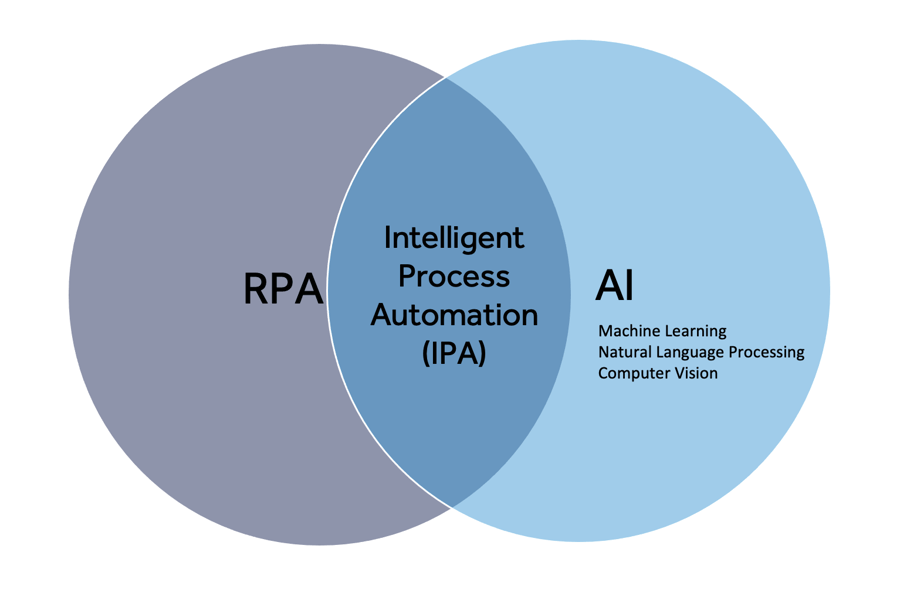
As Blueprint’s annual research in 2023 illustrated, intelligent automation is still in its infancy. Organizations are actively investigating and exploring it, but most RPA estates are still primarily made up of simple, rules-based business tasks.
Even with that being the case, AI’s surge in 2023 has intensified the active pursuit of intelligent automation’s wide-scale application. Perhaps in a few years, 2023 will be considered the year that not only AI, but intelligent automation as well, was a turning point for both these technologies as adoption and implementation accelerates from here on out.
Automation in 2023 didn’t disappoint, leaving one to wonder, what’s in store for 2024? Watch this space as we’ll soon unveil our predictions and projections for where automation will take us in 2024.
Share this
Recent Stories

So You’ve Been Asked to Reduce Your RPA Costs. Here Are 4 Ways to Do It

Microsoft Unveils Power Automate Premium Licenses. What Does That Mean for You?


